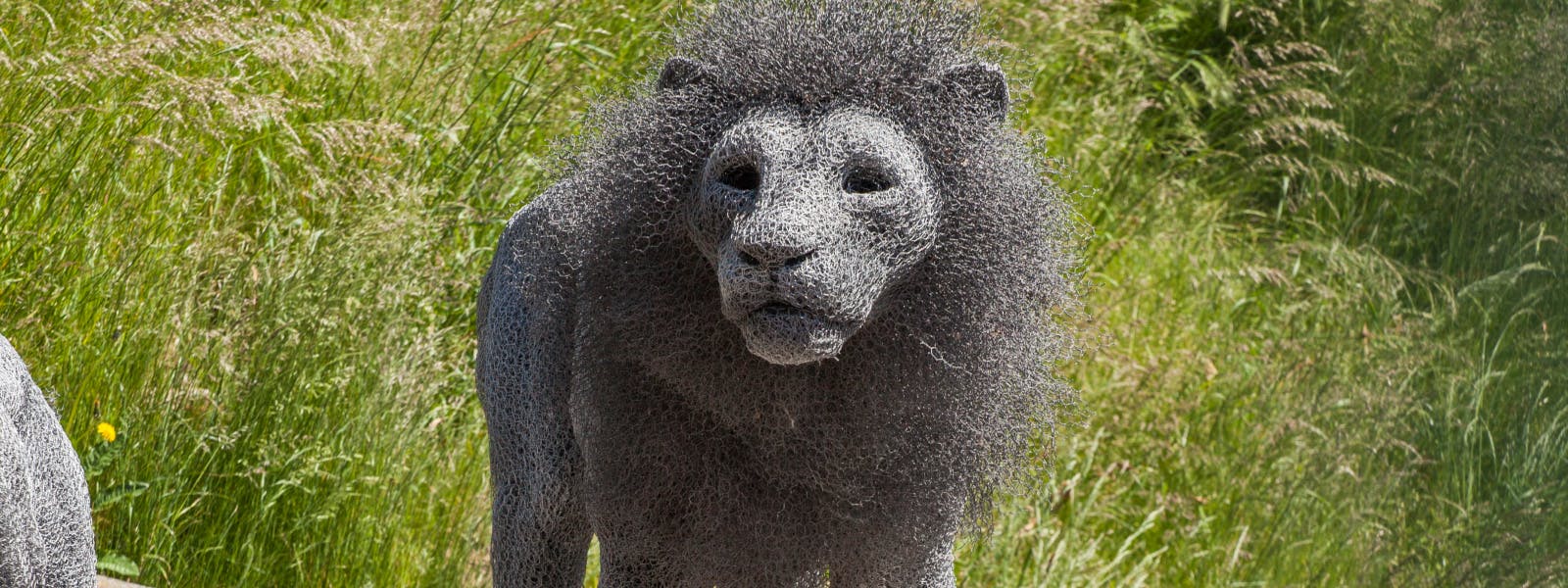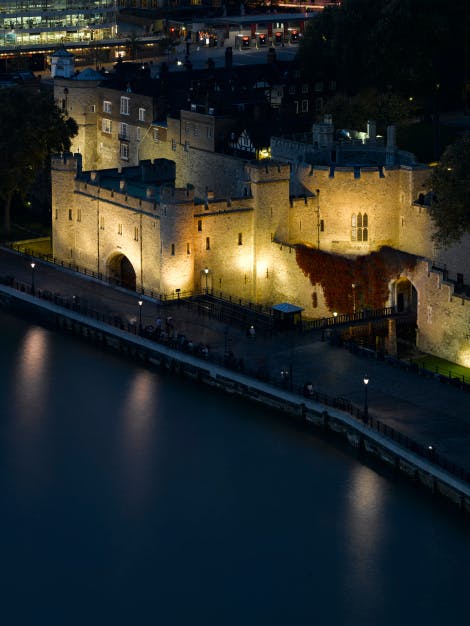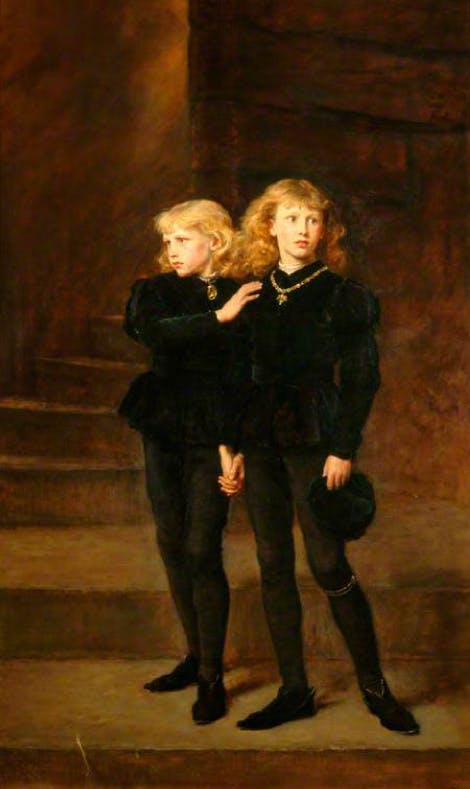
The Tower was home to a collection of 'wild beasts' for over 600 years
The First Zoo in London
From the 1200s to 1835, the Tower of London housed a collection of exotic wild animals, never before seen in London, including lions and a polar bear given as gifts to kings and queens. This collection is known as a menagerie.
The Royal Menagerie at the Tower of London is known as the ‘first zoo in London’. When it closed, many Tower animals were moved to the Zoological Gardens in Regent’s Park – today's London Zoo.
Power Pets
In 1235, Henry III was delighted to be presented with three 'leopards' (probably lions but referred to then as leopards in the heraldry on the king's shield) by the Holy Roman Emperor Frederick II. These inspired the King to start a zoo at the Tower of London. Over time the collection of animals grew: the lions were joined by a polar bear in 1252 and an African elephant in 1255.

Image: © Historic Royal Palaces
The Polar Bear
In 1252, Henry III was given a magnificent white bear, presumably a polar bear, by the King of Norway. Although it was kept muzzled and chained, the bear was allowed to swim and hunt for fish in the Thames. A collar and a ‘stout cord’ were attached to the bear to keep it from escaping.

Image: © Historic Royal Palaces
The Elephant
The King of France sent an elephant to the Tower in 1255, and Londoners flocked ‘to see the novel sight’. Although the elephant had a brand new 40-foot by 20-foot elephant house and a dedicated keeper, it died after just a couple of years.
Many of the other animals did not survive in the cramped conditions, although lions and tigers fared better, with many cubs being born.

Image: © Historic Royal Palaces
Lions at the Tower
In the 1200s, Edward I created a permanent new home for the Menagerie at the western entrance to the Tower. This became known as the Lion Tower. The terrifying sounds and smells of the animals must have both impressed and intimidated visitors.
Henry III’s crest featured three lions, the ancestors of those on the England football team strip today.
By 1622, the collection had grown to include three eagles, two pumas, a tiger and a jackal, as well as more lions and leopards – the main attractions.
James I had the lions’ den refurbished so that visitors could see more of the lions prowling around their circular yard. This included a ‘great cisterne... for the Lyons to drink and wash themselfes in’.
In later centuries some animals took their revenge on those who got too close, maiming and even occasionally killing keepers and visitors.

Image: This painting by George Stubbs is inspired by an incident that took place in 1764, when a cheetah brought to England from India was pitched against a stag in a hunting demonstration at Windsor. Manchester Art Gallery
The Royal Menagerie and Empire
For most of the Tower Menagerie’s history, exotic animals were very rare in England because only monarchs and the elite could afford to keep them.
From the 1700s many more exotic creatures arrived in London as a direct result of Britain’s expanding military and trading empire across the globe. Miss Jenny, the Tower’s cheetah arrived in 1764 from Bengal. Jenny was attended by an Indian keeper known as John Morgan who appears in the records of the Old Bailey stating: 'I came over with a tyger [cheetah] for Sir George Pigot, who was governor of Madras, and attend upon it for him now.'
Closure of the Tower Menagerie
By the beginning of the 1800s, the Tower Menagerie was in decline. It was temporarily revitalised by energetic showman and Head Keeper Alfred Cops, who acquired nearly 300 new animals. This rekindled the popularity of the Tower as a tourist attraction.

Image: © Historic Royal Palaces
Global Journeys
Animals at the Tower had usually travelled here from around the globe. George, the Tower’s Bengal lion was orphaned in 1822 when Colonel Sir James Watson, commander in chief of India, shot the cub’s parents whilst big game hunting.
The cub was put on an East Indiaman ship, the Hope, with a goat as a foster mother at three days old. George’s journey from Bengal to Gravesend took four months and on arrival, he was so tame that visitors to the Tower could play with him.
End of an Era: The Animals Leave the Tower
Growing concerns over animal welfare (the RSPCA was founded in 1824) and the nuisance and expense of the animals finally led to the Menagerie’s closure.
From December 1831, the Duke of Wellington (then Constable of the Tower), dispatched all the Royal Menagerie animals from the Tower of London to a new home in Regent’s Park, leaving behind only Cops’ personal collection.
The Menagerie closed for good in 1835, with the remaining animals sold to zoos or travelling circuses. The Lion Tower was later demolished.

Image: © Historic Royal Palaces
Wire Sculptures at the Tower
In 2010, Historic Royal Palaces commissioned artist Kendra Haste to create 13 galvanised wire sculptures for display at the Tower. These sculptures commemorate the animals held here in the Menagerie. These include a family of lions, a polar bear, an elephant and a baboon troupe – displayed near where the original animals were kept.
Discover the 'Royal Beasts' at the Tower of London

Royal Beasts Exhibition
Explore tales of the surprising animals kept at the Tower on your visit to this palace, prison and fortress.
Hear from our experts on our blog

An Asian wild cat and his Indian trainer in 18th-century London
Abdullah and the 'Shah Goest'
Curator of Inclusive History, Dr Mishka Sinha, picks up the tale of the 'Shah Goest' - a wild cat kept in the Royal Menagerie within the confines of the Tower.

'Washing the Lions'
A Famous April Fools Hoax at the Tower of London
Assistant Curator Minette Butler explores how the Tower’s lions became unwitting accomplices to London’s favourite practical joke.
Browse more history and stories

The story of the Tower of London
Iconic fortress, royal palace and infamous prison.

Tower of London remembers
First World War centenary commemorations at the Tower of London

The Princes in the Tower
Murdered or survived – what happened to Edward and his younger brother Richard?
Explore what's on

- Things to see
Royal Beasts
Discover why exotic animals were kept at the Tower of London and see how they lived in the Royal Menagerie.
- Open
- Tower of London
- Included in palace admission (Members go free)

- For members
- Events
Members-only Ceremony of the Keys
Members-only access to the traditional locking up of the Tower of London, the Ceremony of the Keys.
-
18 January, 08 February, 22 March 2026
- 21:30
- Tower of London
- Separate ticket (advance booking required)

- Tours and talks
Ceremony of the Keys
Be part of this ancient tradition, which has taken place every night for at least 700 years in the Ceremony of the Keys at the Tower of London.
-
Daily (next ticket release 05 January 2026)
- From 21:30-22:05
- Tower of London
- Separate ticket (advance booking required)
Shop online

Tower of London Navy Raven Sweatshirt
Inspired by the infamous ravens of the Tower of London, this sweatshirt will keep you warm on those chilly days.
£38.00

Shop Ravens
It is said that if the six ravens were ever to leave the Tower of London then the Tower and the kingdom will fall. Naturally, to preserve the kingdom six ravens are kept to live and protect the Tower of London.
From £2.50

Shop Kings & Queens of England
Discover our informative and best selling range, inspired by the incredible history of the Kings and Queens of England.
From £4.99
